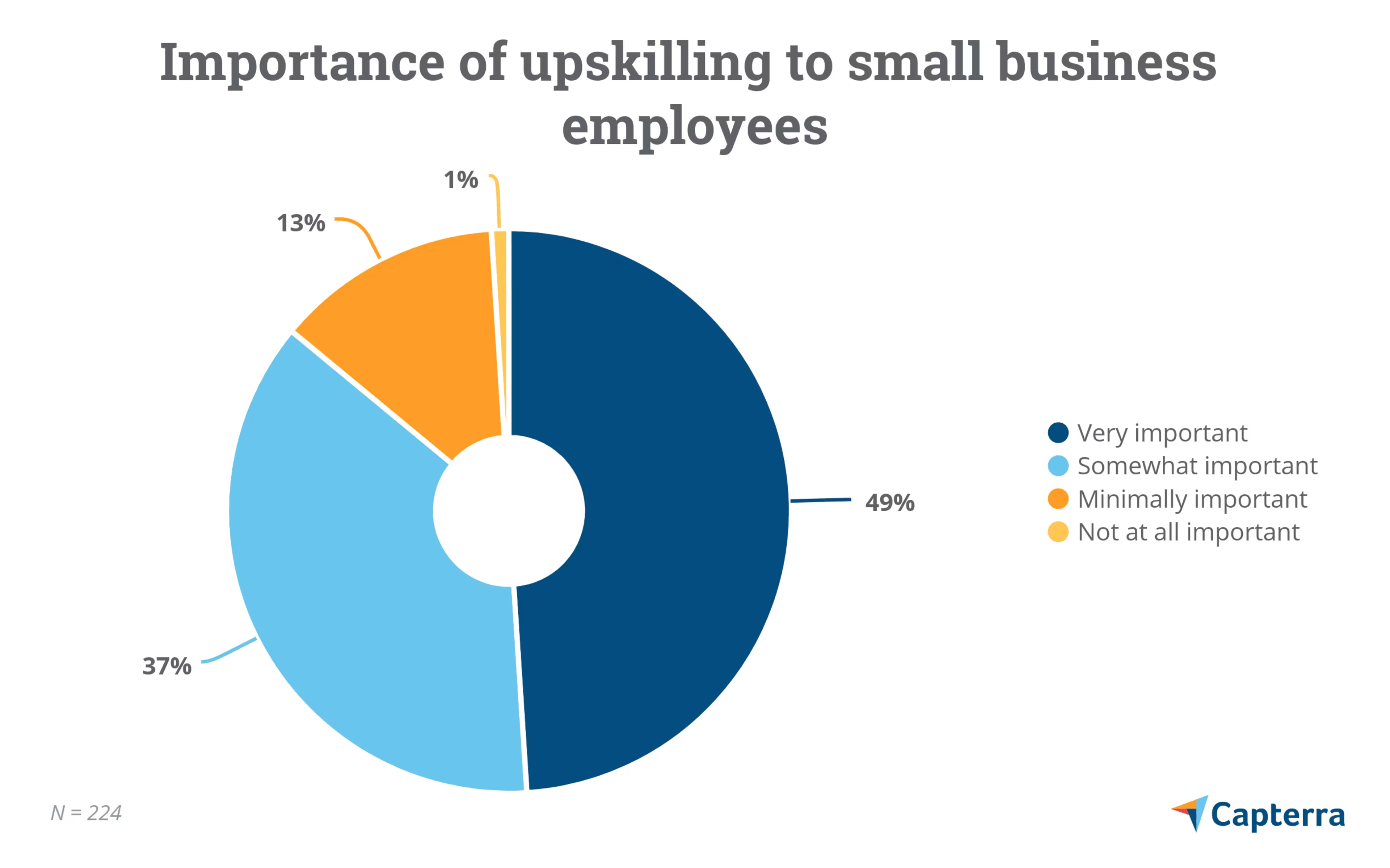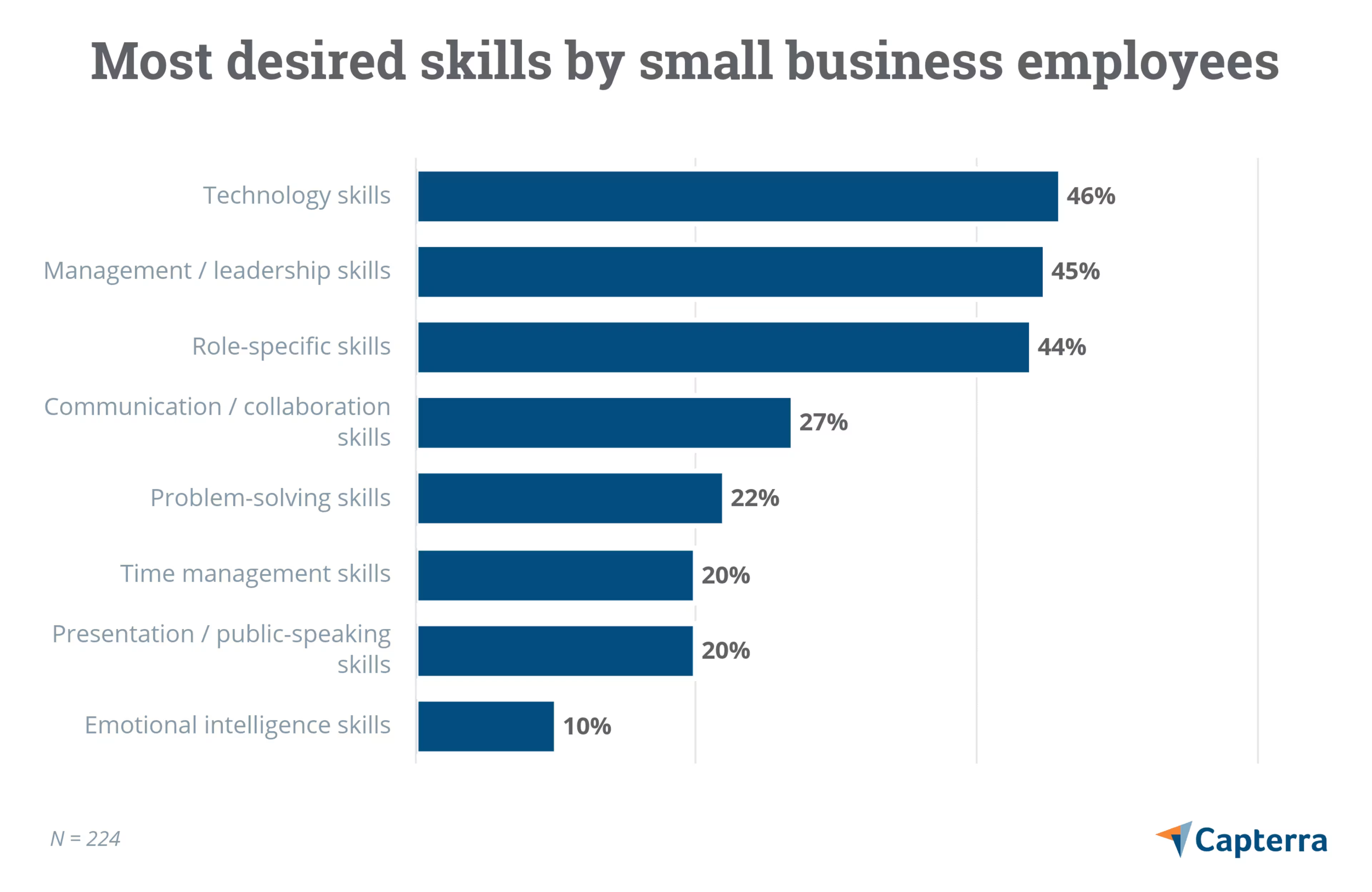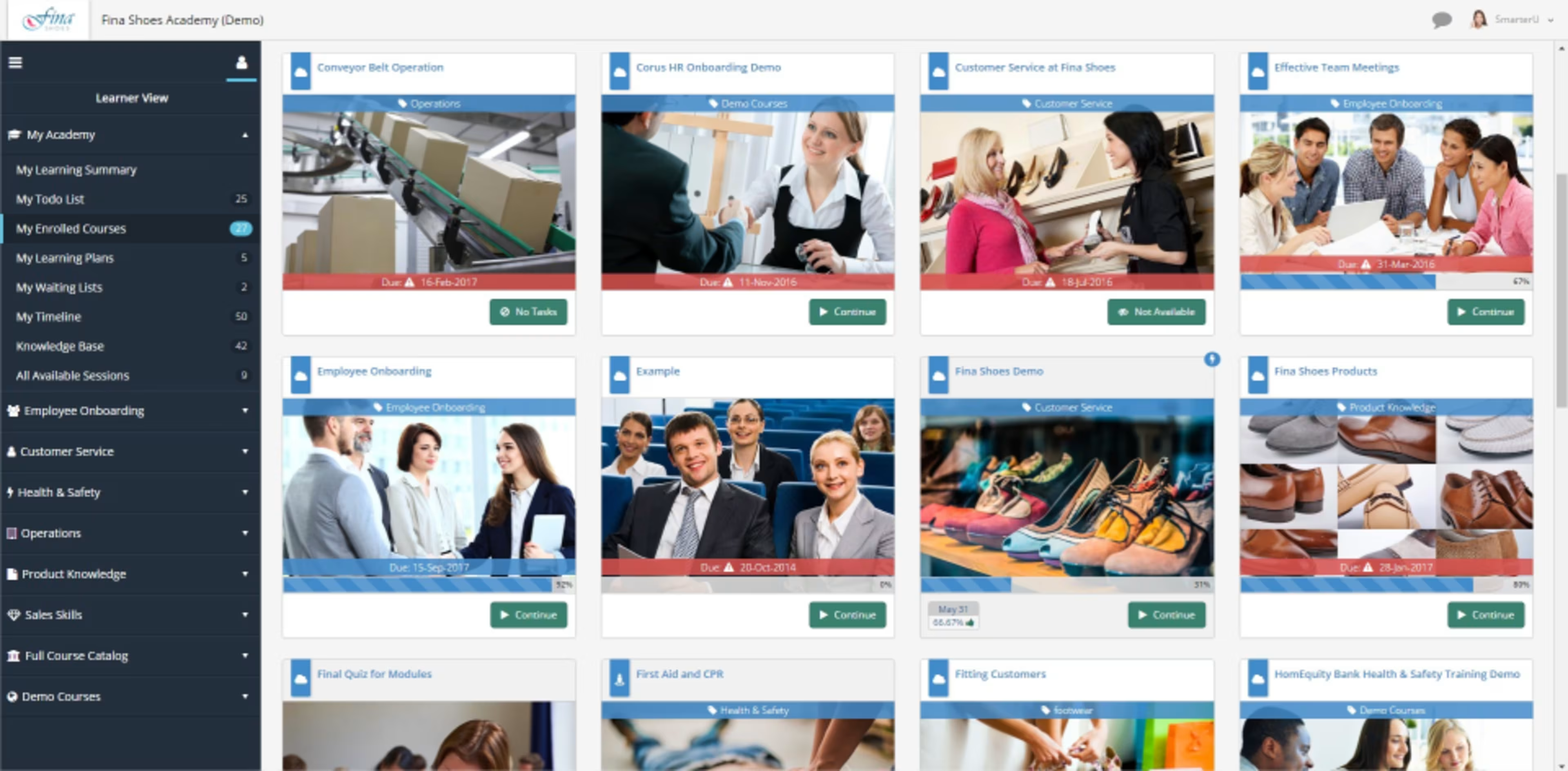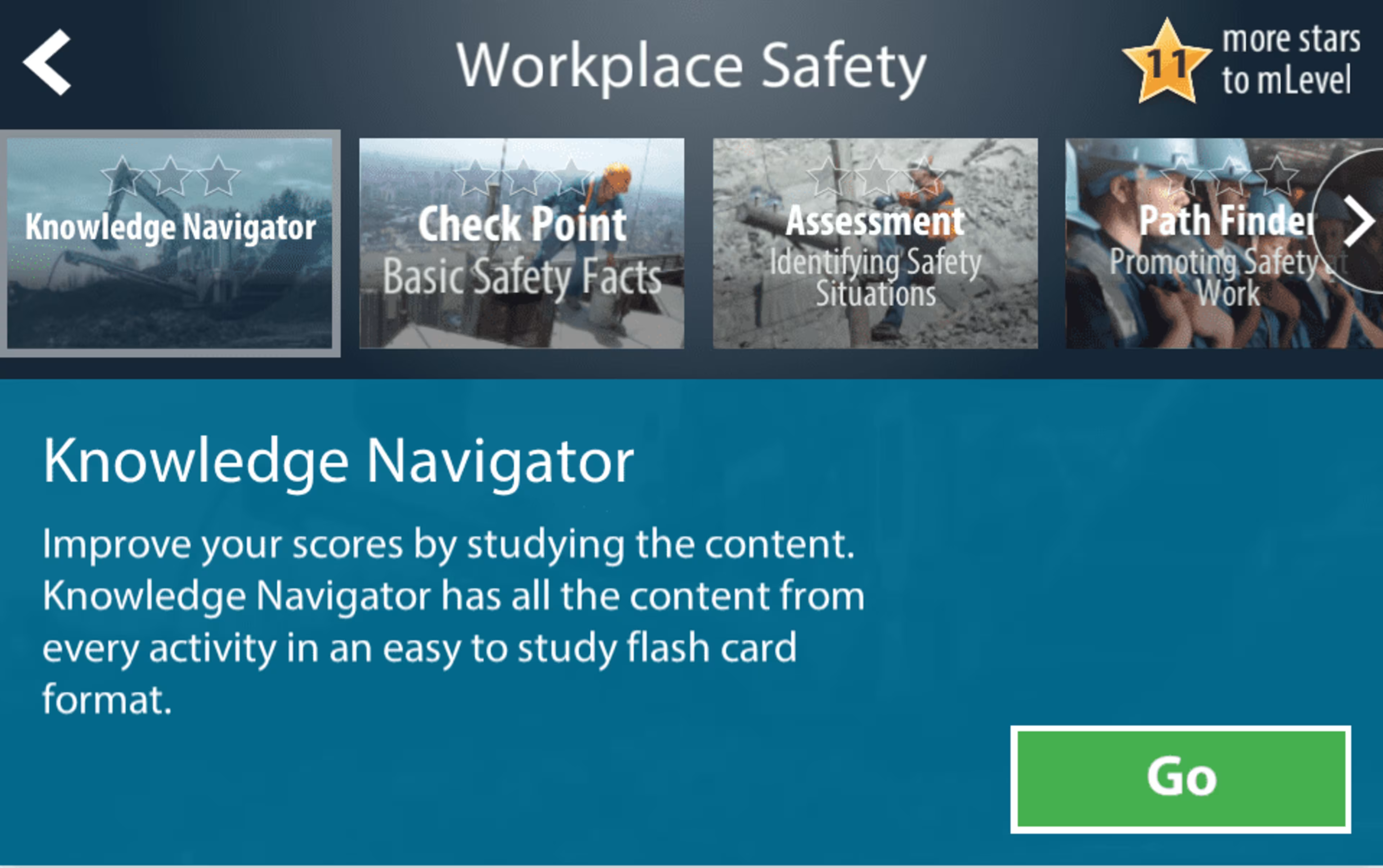If there's one thing that employers and employees can agree on, it's that everyone wins when workers “upskill," or develop new skills to apply to their job. Employees get the continuous training they desire, and employers benefit from having a more proficient workforce.
Facing such an obvious win-win scenario, you would think small-business HR departments would prioritize upskilling to reap the rewards of more engaged, more productive employees.
But you would think wrong.

Instead, many businesses are taking a hands-off approach and asking employees to upskill themselves. According to a study by Randstad, 40% of U.S. employees have not been offered resources or been paid anything by their employer for upskilling purposes.
Keep doing this, and the results (or the lack thereof) will speak for themselves. In 2019, small businesses need to take an active role in upskilling their workforce. Those that do will enjoy numerous benefits over those that continue to leave workers to their own upskilling devices.
▼
Why the time for sitting idle on upskilling is over
Providing continuous training to employees requires time, money, and effort. But in the midst of an ongoing employee burnout crisis, the alternative—asking employees to find and complete classes or online training outside of their immense workload—is becoming an increasingly harder pill to swallow.
One-third of workers haven't done anything to upskill in the past year. If your small business continues to take a passive stance on upskilling, that number will only go up.
Below, we'll explain in more detail why upskilling is worth the investment, and hone in on where you should prioritize your upskilling initiative based on a Capterra survey of small-business employees.
We'll also show you all the ways you can support upskilling in your business, including leveraging a learning management system (LMS) to deliver personalized digital training course options.
▼
Why upskilling is a worthwhile investment for small businesses
I can't blame you if you're not upskilling your workers today. It's hard enough as a small business to dedicate the time and resources necessary to train employees to minimum competency, let alone help them develop new skills continuously over time.
But upskilling is a worthwhile investment for more reasons than just higher engagement and proficiency. Here's why:
Upskilling attracts more job seekers. According to a study by LinkedIn, growth opportunities are the second most important factor in job searches behind compensation. Offering (and touting) your upskilling resources can woo top talent to your business.
Upskilling helps retain the workers you have. Two in three workers quit their job due to a lack of learning and development opportunities. Offering employees the means to continuously develop new skills is an incentive for them to stick around.
Upskilling helps you identify and develop future leaders. 58% of small-business owners have no succession plan in place. Identifying workers who are learning new skills that you value in leadership roles can give you a roster of promising candidates to take over should a manager or executive leave the business.
Upskilling reduces “brain drain." Have you ever had a worker leave, only to realize they were the only one in the company that knew an important piece of information or possessed a vital skill? Spreading institutional knowledge and skills among a large group of employees through upskilling ensures this “brain drain" doesn't happen.
Finally, lest you forget, employees really care about this stuff!
According to the Capterra survey, 86% of employees at small businesses (defined as having 100 employees or less) consider continually learning and developing new skills to be “very" or “moderately" important in their career:

Making the transition to become an upskilling organization is not an easy one, but the payoff is worth the effort. In the next section, we'll give you tips on how to focus your efforts and quickly scale your upskilling program.
▼
Tips for starting an upskilling program from scratch
Your small business is on board with implementing resources to support employee upskilling, but you might not know how to turn that idea into reality.
Here are a few tips to get you started:
Tip #1: Prioritize training resources in a few skills areas
Although you may have a wide variety of areas where you want employees to hone their skills, you need to prioritize the skills that one, the most workers have an interest in learning, and two, will most benefit your business.
When we asked small business employees which skills they wish their employer offered support for, three stuck out from the rest: technology skills (46%), management/leadership skills (45%), and role-specific skills (44%).

It's no surprise that workers are worried that their tech skills aren't up to snuff: An analysis of 13 million new jobs in the U.S. since 2010 found nearly two-thirds require “medium or advanced levels of digital skills."
Whether it's training on the technology you already have, or on the tools you could potentially deploy in the future, this should be a focus area for your upskilling initiative.
Similarly, small businesses are facing a dearth of important managerial skills, causing more than a quarter of small-business employees to quit their jobs due to bad management. Regardless of the industry you're in, upskilling employees with leadership skills is vital.
If you think your employees might have different desired skills than these survey results, find out. You can ask your employees about their upskilling needs through your own anonymous survey, or have managers bring it up in performance reviews.
Tip #2: Master the art of the MOOC
If you think that an upskilling program means setting up inflexible, classroom-style training sessions that will tear workers away from their desks, there's a better option: massive open online courses, or MOOCs.

An example of a MOOC catalog in SmarterU LMS (Source)
MOOCs are eLearning courses that can either be created in-house or purchased from third-party sources such as Lynda.com, edX, or Udemy. They are then delivered to workers through a learning management system (LMS).
The great thing about MOOCs is the amount of control you have over their administration. You can leave certain MOOCs wide open for any employee to complete at their leisure. You can also create custom learning paths for workers by tying together a series of MOOCs on a certain topic, such as leadership skills.
The ability to purchase pre-made courses and the flexibility inherent in MOOCs compared to classroom-style training sessions make them a super scalable and affordable solution to get an upskilling program off the ground.
Tip #3: Break up training into micro-sized pieces
On the surface, what's the difference between one hour-long training course, and six ten-minute ones? It turns out it can make all the difference in the world.

An example of a microlearning course in mLevel (__Source)
Implementing a practice known as “microlearning," where long training courses are broken up into smaller 10- to 15-minute chunks, carries numerous benefits for upskilling purposes:
Microlearning courses are cheaper to make
Microlearning makes eLearning more engaging
Microlearning helps employees better retain information
Microlearning allows employees to spend less time away from work
Leverage microlearning wherever possible to make your upskilling program more affordable and effective.
Tip #4: Don't ignore opportunities for informal learning
You've identified the skill areas where you want to focus. You've created and purchased MOOCs and other online tools, and broken up training content into more palatable, microlearning bits.
But that's still only a partial slice of the whole pie that is upskilling. If you don't pair those courses with all of the ways that informal learning can happen in your organization, you're missing an important component.
Here are some examples where informal learning can take place:
“Lunch and learns." Once a month, employees can sign up to attend a lunch where one of their peers gives a presentation on a certain skill or concept.
Mentorships. Workers are paired with colleagues that possess skills they'd like to develop.
Work shadowing. Employees shadow someone for the day to learn more about their role.
Combine formal training courses with some of these more informal learning methods to round out your upskilling program without adding a lot of extra cost.
Tip #5: Know which skills areas are beyond your grasp
Between the institutional knowledge you possess in-house and the pre-made courses you can leverage from external sources, that should cover most of your upskilling needs.
But it won't cover all of them. Some skills may be too niche or an employee may require more in-depth learning than what you're able to provide.
When that happens, know when to hang up your hat and give your workers more external resources. You can refer them to local workshops, or provide full or partial reimbursement to attend a college-level class or go through a certification program.
▼
Upskill your business to future success today
In 2018, large companies such as Walmart, Disney, and Kroger publicly pledged to invest over $600 million in upskilling their workforce. Upskilling is clearly a priority for them, and it should be a priority for you too.
That doesn't mean you have to throw millions of dollars at this problem, though. By honing in on the right skill sets, rounding out your program with informal learning methods, and taking training out of the classroom and into a more flexible digital setting, you can begin to take control of your workers' upskilling needs.
We can offer additional help with that last bit. To learn more about the different LMS options on the market, including pricing information, features, and reviews, head to our LMS software directory.
You can also check out more resources like this one on our Talent Management and Training Technology blogs.